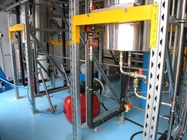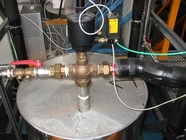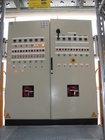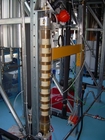A pilot study to assess the effectiveness of anti-Legionella treatments
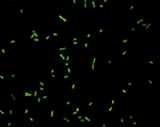
Legionella bacteria, pathogenic for man, are the cause of acute respiratory infections referred to as legionellosis*. In France, the disease has been subject to mandatory declaration notification since 1987. The health authorities recorded 1,243 cases of legionellosis** in 2008, including 10% of cases where the patient died. Characterised about thirty years ago, Legionella bacteria have a hydrotelluric origin and are encountered in natural reservoirs (rivers, lakes and ponds), wet ground, compost and waste water treatment sludges. Their optimum growth temperatures are between 25 and 43°C. They consequently colonise numerous systems connected with human activities including domestic hot water systems, jacuzzis, cooling towers for air-conditioning systems or industrial plant, decorative fountains, ice machines, etc. Legionella bacteria are present both in water and biofilms (98%), in the form of microbial colonies which proliferate on the surface of pipes and ducts in contact with water.
A public health issue of primary importance
Numerous disinfection processes have been introduced, but with only transient effectiveness and rapid recolonisation of the systems. For the purpose of studying the real effectiveness of anti-Legionella treatments in water and biofilm, the CSTB has set up a pilot unit to simulate an actual size domestic hot water system operating under controlled conditions. System parameters are checked with extreme care. The pilot unit comprises stainless steel loops to avoid corrosion and scaling having an impact on bacterial growth. This makes it possible to compare a treated circuit with an untreated control circuit. Recovery and analysis of the biofilm also represent a major advantage of this pilot-scale.
Research work conducted on the test unit over the last two years has been aimed at 1) preparing the facility for assessment tests concerning the effectiveness of various types of preventive treatment, in connection with project 2004-SA-0345 of the AFSSA (French Food Safety Agency) relating to the "composition of treatment authorisation application files relating to combating Legionella bacteria in water intended for human consumption – execution of tests relating to effectiveness" and 2) the study of microbial flora present in domestic hot water systems.
Currently located at the CSTB Champs-sur-Marne site, the pilot unit will be moved to the Nantes Centre in the future Aquasim large-scale research facility, at the end of 2009.

